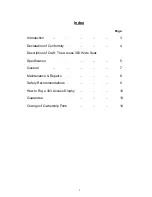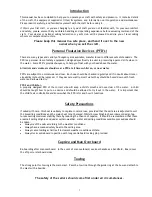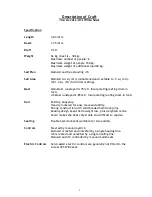
8
Safety Recommendations
Access Dinghies are designed with a hull form and other features which combine to
give considerable stability. There is a simple set of rules which we must follow to
continue our excellent safety record and prevent any accidents. The stability of
the Access Dinghies are reliant upon the following factors.
Centreboards
It is most important that the keel be fully down when sailing. The hole one third
down the keel is there purely to facilitate sailing off a beach, and under no
circumstances should people with disabilities be allowed to sail around with the
keel held in this position. There is provision to lock the keel fully down so as even
in a “knock down” it remains in place.
Seating
Because the placement of sailor’s weight affects stability it is important that
people remain seated low in the boat. If a sailor needs support from strapping, use
only quick release velcro straps to hold the sailor in place. In no circumstances
should any other strap fixings be used.
Reefing
Being a displacement type hull extra sail area in strong winds does not mean more
speed, all it does is push the bow too far into the water and make it more difficult
to handle. In a breeze it is therefore recommended always to reef to suit the
stronger gusts.
Towing
If an Access dinghy needs to be towed on the water by another boat, it is safer and
easier to tie the dinghy close along side and remove the rudder blade so that it
cannot be “steered” in the wrong direction.
Transferring
A pontoon system which enables safe, keel down transfer of sailors to and from the
dinghy is available. Using this avoids off the beach keel handling and transferring
problems. It ensures that keels remain down throughout transferring.
Discriminatory Keel and Reefing Adjustments
For safety reasons people with disabilities need the keel down and because many
are unable to raise and lower the keel to improve sailing performance and also
unable to adjust the size of the sail by reefing, it is discriminatory to allow anyone
to make these adjustments during a race.






























